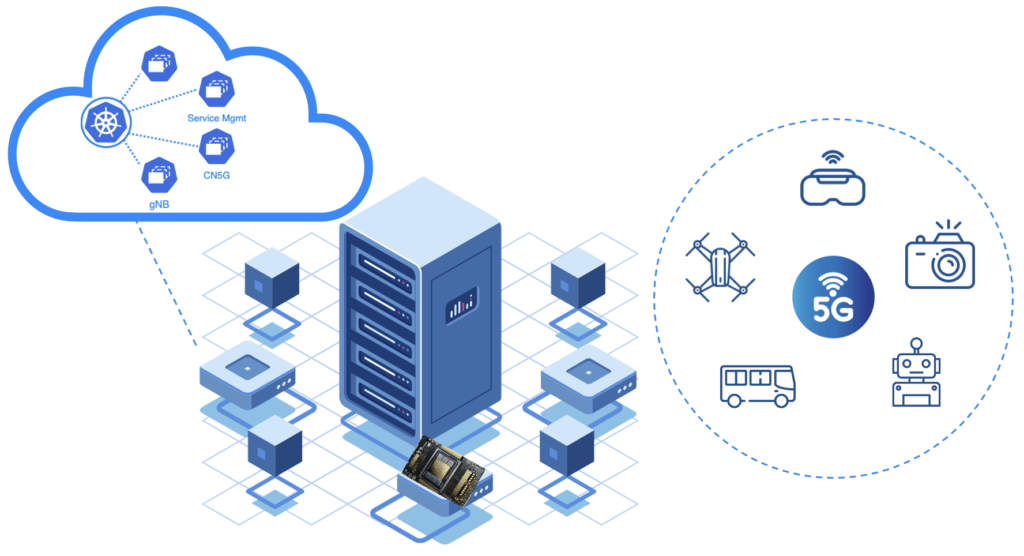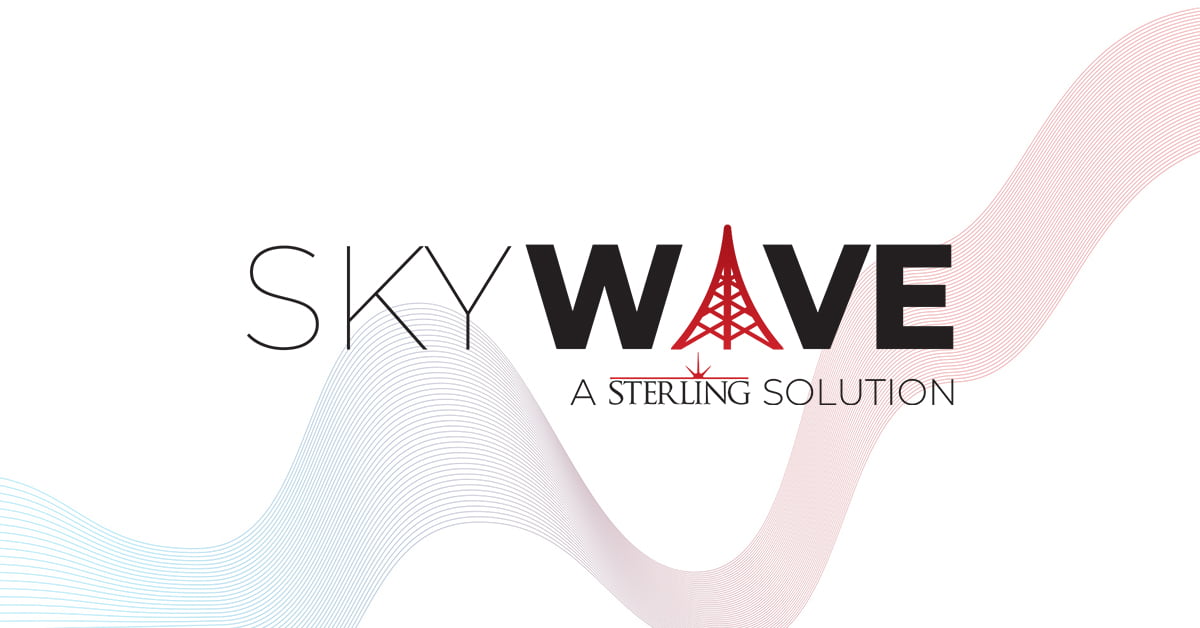Introducing the Sterling SkyWave™ developer private-cloud service for research and innovation in 5G and 6G advanced wireless networks. Collaborating with the world leader in AI computing—NVIDIA—Sterling has integrated NVIDIA’s Aerial RAN CoLab Over-the-Air (ARC-OTA) to provide a managed private 5G cloud service for developers. SkyWave combines ARC-OTA’s powerful full stack of software and hardware components with a suite of Sterling technical services and support.

SkyWave — The ‘Easy Button’ to ARC-OTA Operationality
With SkyWave, researchers and developers can quickly leverage the first fully programmable cellular network testbed: ARC-OTA services. Users can rapidly experiment with, simulate, prototype, validate, and benchmark innovative new software, on the over-the-air research network.
Based on O-RAN aligned specifications, ARC-OTA gives software developers the scalability and flexibility to use the full stack for their specific research streams and requirements, while avoiding the ‘vendor lock-in’ that comes with proprietary network-equipment-provider black boxes. ARC-OTA source code can be quickly modified and re-validated towards creating innovative algorithms.

Adaptive Configuration
SkyWave was designed to be adaptive and flexible, in contrast to other solutions in the market. The SkyWave hardware reference architecture uses industry-standard COTS products instead of proprietary black boxes, and Sterling deploys the software using modern practices with Kubernetes.
SkyWave adapts to the end-user’s needs—instead of the end-user having to adapt to a vendor’s closed solution.
Sterling can scale up their managed services to fit more complex experiments or scale down to accommodate a minimal environment—whatever fits the researcher’s needs.
Intuitive Integration
Using the Sterling SkyWave Portal, the customer will provide use-cases and requirements for their private cloud service. Sterling will take care of the rest, plotting out the research needs of the project, and communicating with the customer as necessary, in order to customize the private 5G on-premises deployment and developer service.
Sterling’s Professional Services team will handle the end-user onboarding and complete the planning of the private 5G cell site.
With the researcher’s requirements translated to network sizing, Sterling will adapt the reference architecture and procure the COTS hardware components. When those products arrive at the Sterling SkyWave Integration Facility, Sterling engineers will inventory and pre-stage the hardware and software, with appropriate configurations. Sterling will then deploy, test, and securely ship the SkyWave modular data-center instance to the customer.
Next, Sterling SkyWave Professional Services will arrive at the customer’s site. They will inventory the SkyWave components again, complete the installation, and re-test the service—all with the goal of completing the network bring-up and deployment in under 72 hours.
With the service installed and operational, Sterling can perform remote monitoring and management. Sterling SkyWave support will be on call and available as needed.
Future-Ready Adaptability
The NVIDIA ARC-OTA in SkyWave gives developers and researchers complete access not only to the source code (C/C++) for the network (physical layer, network layers, and core network services) but also to the source code of vendors who have included their tools in the SkyWave platform. Being able to download and modify code will free researchers to experiment on 5G networks in ways that will lead to innovation in technologies for 6G.
SkyWave incorporates a cloud-native software architecture. Each RAN network service and all core network services are containerized, packaging up code and dependencies so that applications run quickly and reliably from one computing environment to another. SkyWave employs Kubernetes to orchestrate those containers (containerized applications, workloads, and services), automating their deployment, scaling, and management. SkyWave utilizes Helm for application management.
Ongoing Support
The enterprise-grade COTS hardware in SkyWave is covered by the manufacturer’s warranty, and Sterling’s SkyWave team will be the first line of support. To further adapt to customer needs, Sterling provides options for additional support, including SkyWave MSP, in which the SkyWave team manages the environment for the end researcher.
NVIDIA Products Used in SkyWave
Each SkyWave system includes an NVIDIA A100X converged accelerator to host the 5G ARC-OTA physical layer. The NVIDIA A100X combines the capabilities of NVIDIA A100 Tensor Core GPU with the BlueField-2 DPU. With MIG, each A100 can be partitioned into as many as seven GPU instances, allowing even more services to run simultaneously. This card can be used to experiment with the 5G signal processing pipeline and to also provide acceleration for Machine-Learning models and other research needs, when not operational as a private 5G network or leveraging MIG capabilities.
The NVIDIA ARC-OTA platform, targeted for next-generation wireless developers, eases developer onboarding, making for quick algorithm development in real-time networks. ARC-OTA equips developers with the NVIDIA lab-qualified hardware infrastructure blueprint to deploy a 3GPP Release 15 and O-RAN 7.2 split campus network. Complete access to source code is provided from Aerial SDK Layer 1 (NVIDIA Aerial SDK) and the Open Air Alliance (OAI) [openairinterface.org], as well as Distributed Unit (DU), Centralized Unit (CU), 5G NR gNB and 5G Core Node(CN) network elements.
Who Needs SkyWave?
SkyWave is geared toward researchers, developers, and enterprises seeking to do software development and accelerated innovation in the 5G and eventually 6G worlds. They will leverage the power and capabilities of the SkyWave package, prototyping applications and eradicating errors before deployment into the production environment. They will also ascertain specific benchmarks during algorithmic development, which can then be applied in future projects.
End-users will include everyone focused on 5G/6G research and prototyping: from faculty and students at universities where experimentation and research in advanced wireless networks is being conducted, to federal research centers and laboratories, industrial research companies; system integrators, operators, and more.

